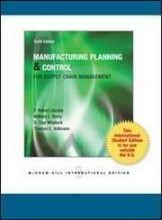Closed- loop supply chains - How to 'Close' the loop?
5 important questions on Closed- loop supply chains - How to 'Close' the loop?
Define the characteristics of the return flow "Repair"
- Repairing products involves fixing and/or replacing broken parts.
Other parts are generally not affected.
- Repairing products usually only requires limited product disassembly and reassembly.
Define the characteristics of the return flow "Refurbishing"
Quality standards are typically less rigorous than those for new products.
- Refurbishing involves disassembling used products into modules.
All critical modules are inspected and fixed/replaced.
Approved modules are reassembled into refurbished products.
- Refurbishing can be combined with ‘technological upgrading’.
Replacing outdated modules and parts with technologically superior ones.
Define the characteristics of the return flow "Remanufacturing"
- Remanufacturing involves completely disassembling used products:
All modules and parts are extensively inspected.
1. Worn-out or outdated parts and modules are replaced
2. Repairable parts and modules are fixed and extensively tested
3. Approved parts and modules are assembled into remanufacturing products
- Remanufacturing can also be combined with ‘technological upgrading’ Upgrading a used product to “as new” quality
- Higher grades + faster learning
- Never study anything twice
- 100% sure, 100% understanding
Define the characteristics of the return flow "Cannibalisation"
Only a small proportion of used products is typically cannibalised.
- ‘Cannibalised’ materials are used in repair, refurbishing or remanufacturing of other products and components.
Quality standards for cannibalised parts depends on the subsequent process in which they are being used.
- Cannibalisation involves selective disassembly of used products and inspection of potentially reusable parts.
Parts and modules that are not reusable are typically ignored
Cannibalisation is often used in old industry like aircraft, bikes, …
Define the characteristics of the return flow "Recycling"
The identity and functionality of products and components is lost.
- Recycled materials can be either used in:
Production of original parts (if quality is high enough)
Production of other parts
- Recycling is a material recovery process that is focused on end-of life products.
It typically starts when used products and components are disassembled into parts.
The question on the page originate from the summary of the following study material:
- A unique study and practice tool
- Never study anything twice again
- Get the grades you hope for
- 100% sure, 100% understanding






























